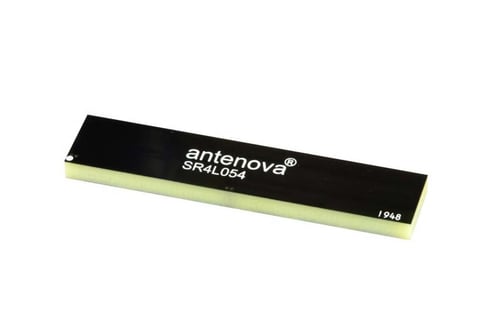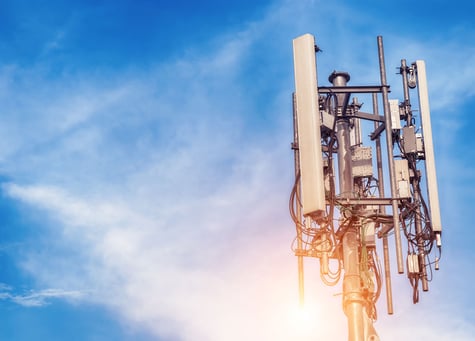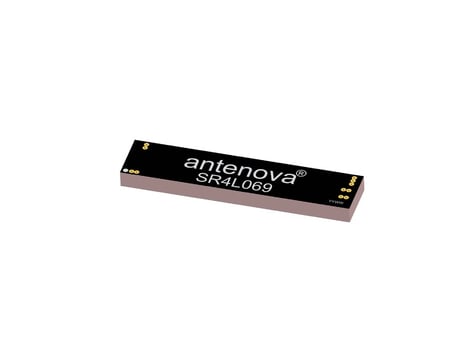From a technology perspective, the leap from 4G to 5G is huge. And, as the University of South Wales describes, the success of 5G will be measured by the volume of e-waste created from out-dated tech. But what concern is there for the devices that launch with poor performance, or those which struggle to get through the stringent network approval processes? Could those end up as e-waste, too?
5G introduces an entirely new set of wireless design and antenna integration concerns that have not previously existed. The introduction of high frequency millimetre waves, multiple-input multiple-output hardware, wider bandwidths, and higher data throughput each create unique considerations for product designers.
In short, the devices created for 5G will need to be larger, more power efficient and designed to prioritise RF performance above all else. How can product engineers ensure that this is the case? This article should give you a few ideas of what those considerations are.
Higher component density (and design complexity)
It almost goes without saying, but 5G devices will be much more complex than their 4G counterparts. Even a bump in product generation to incorporate 5G could instigate a lengthier design process than some engineers have ever been accustomed to.
Devices will require more antennas, more components and more circuitry to support 5G. Each of these antennas will create new design requirements, to allow for ground plane space, follow the required keep-out guidelines and ensure radiation patterns are accounted for. Even in the first iPhone with 5G, Apple added a window on the right-hand side of the aluminium frame to enable their antenna to radiate effectively.
As technologies supporting 5G begin to mature, we may see this design process simplify, but as of this early stage, there is unavoidable complexity.
Tackling the challenging operating environment
Packing more and more power, components and complex electronics in minimal space could prove a recipe for thermal dissipation disaster. If you look at smartphones, most are just millimetres thick, while packing in batteries, cameras, buttons, and countless other features. Particularly for larger design teams, the importance of collaboration has never been greater, particularly where thermal effects, product materials and component placement will all potentially impact the RF performance of the device.
Power consumption and optimisation
Off-the-shelf chipsets for 5G have the potential to drain a device’s battery far quicker than any previous generation of technology. There are several measures of antenna efficiency, which network carriers are concerned with in regards to performance. This includes measures of efficiency, total radiated power and the radiated spurious emissions.
Without an optimised antenna, there will be wasted power, which can reduce battery life further. It means transmitting and receiving data can take longer, as more packets are likely to be lost, hence why cell carriers set benchmarks for performance – as a lot of inefficient devices would limit network capacity.
Design techniques for performance

5G requires an upheaval in components from previous wireless generations. Components that are designed for 5G look very different electrically to those designed for 3G or 4G, for instance. There are several new techniques that have become widespread among the tech industry.
Beamforming is one such technique. In order to maximise the signal a device receives, a device with a set of antennas can manipulate the direction of a wave-front. This technique can be enacted in an analog mode or through a hybrid approach using digital techniques.
Antennas for 5G
Each of these factors make the creation and design of embedded antennas all the more difficult. Antenna designers have the tough task of balancing each of these unique requirements with a solution that fits within a wide range of applications, while incorporating each of these advanced technologies.
The antenna design process for 5G looks very different from any other technology. While following the same methodology, the intricacies of 5G make the refinement of an antenna design all the more important.
Using advanced simulation techniques, RF engineers can assess the performance of an antenna along a series of topologies, based on the applications and intended use of the antenna.
5G antennas may be physically altered to incorporate feeds, slits and bends which can modify the inductive/capacitive effects of an antenna. Experienced RF engineers are able to manipulate these factors in such a way that provides the best possible performance from the minimum possible chip size.
One of the biggest hurdles in a 5G product design project can be the network approval process. In order to ensure devices operate efficiently on their networks, carriers require devices meet certain performance benchmarks, depending on the market and individual carrier. To meet these requirements, antennas almost always must be tuned and impedance matched specifically for the design candidate. To make this process as straightforward as possible, Antenova’s RF engineers have created antennas that can be easily matched and tuned, even by those with minimal RF experience. This designed for integration methodology features heavily in Antenova’s first 5G antenna – Lepida.
Lepida

Featuring a unique design, Lepida is capable of delivering high levels of performance across a range of bands, including B71 for 5G. The surface mounted antenna uses a ground plane to radiate effectively – extending beneath the antenna – to minimise the space occupied on your PCB.
To learn more about the performance of Lepida (SR4L054), download the full datasheet or get in touch with our technical sales team for integration support or any supplemental information.




